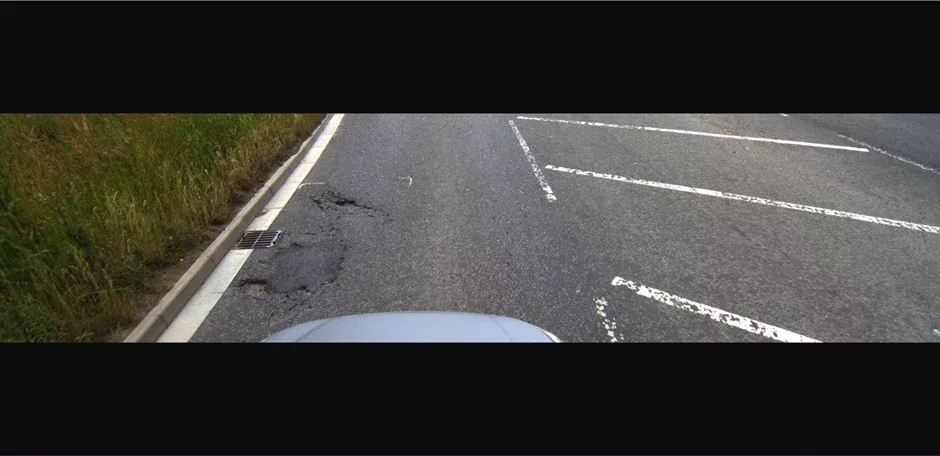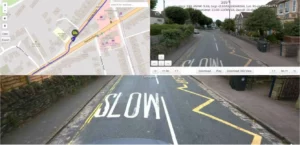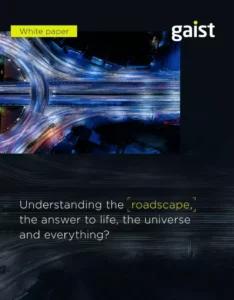In this article, John Cartledge, Global Development Manager at Gaist, explores the history of road deaths and the latest partnership Gaist has formed to make the ambition to eliminate all traffic fatalities a reality.
With the introduction of the Highway Code in 1931, the concept of road safety was first linked with the road user. At the time there were just 2.3 million motor vehicles on our roads but with 7,000 people tragically killed in road accidents each year. Fast forward to today, there are over 27 million vehicles on our roads but thanks to advances in vehicle safety and other infrastructure safety factors, almost a quarter of the number of road deaths now occur.
Indeed, the 40 years between 1979 and 2009 showed a sharp decrease in road deaths, falling by 35% (from 3409 to 2222). At that rate of progress we should have achieved Vision Zero by this year (2022) but, despite many initiatives to compel a continuation of the downward trend, we have hit a 10-year plateau. Indeed even today Brake estimates that someone is killed or seriously injured on UK roads every 22 minutes.

Many physical factors continue to contribute to road deaths including road defects, inadequate road design and changes in the road surface. These present real challenges to road maintenance professionals with limited resources and under pressure to plan for and improve road networks and active travel infrastructure alongside improving road safety.
How do we give those responsible for road safety the tools they need to meet these challenges?
New Data, Old Challenges
The advent of dynamic data from vehicles circulating on the road network present a real opportunity for network operators to understand what is happening much closer to real time than ever before. Anonymised, aggregated data from vehicles can now provide valuable insights around irregular driving patterns in specific areas, road surface conditions, ambient temperatures and more.
Statista estimates that there are 16.65 million connected cars on the road in the UK today, a number which is projected to increase with all new vehicles registered to be connected by 2026.
As a result, we now have more empirical information on the driver’s road experience than ever before but, until recently, there were no solutions using this information to give those responsible for road safety new tools to understand and interpret their road network.
We knew there must be a way to use the latest datasets to advance road safety in a useable format and set out in partnership with automotive giants Aisin to fill this gap in the market and effectuate real innovation in approaches to road safety.

RoadTrace- Making Leading-Edge Technology Work For Road Safety
Current safety solutions are predominantly reactive rather than proactive, with technological and resource limitations defining what highways and road safety managers can feasibly do to prevent road deaths.
Imagine that you could have a safety inspector on every road on your network who logs the instances of abnormal driving such as heavy braking alongside relevant contextual factors when the heavy braking occurred, all underpinned by clear, high-definition imagery of each specific area. Imagine they were working day and night, aggregating all of these harsh braking incidents over set periods of time to highlight only key areas of investigation for consideration by road safety professionals…
Instead of the resource-intensive and wholly unlikely prospect of having a team of inspectors covering your whole network at all times, we are now using the vehicles on the network every minute of every day to derive insights to capture all the information noted above. AISIN’s RoadTrace technology is leveraging data from existing connected vehicles to provide comprehensible, useable information for road safety managers. In combination with Gaist’s industry-leading, geolocated high-definition imagery we are giving those responsible for road safety everything they need to proactively manage their network.
Instead of 15 million data points every month, leaving the highways or road safety manager to try and work out what to do with the data themselves- we use a transparent methodology to distil these in to key areas of investigation twinned with current HD imagery to enable resource to be focused where it is needed most, saving lives in the process.

Positive Implications For Road Safety
Consider the positive safety implications of being able to understand near-misses on a network in specific locations. Repeated abnormal driving in specific areas suggests specific road features are perceived by the road user as hazardous and become hazardous when cars repeatedly brake sharply in that area.
By coupling these dynamic datasets with other contextual features and image-based surveys accessible from the desktop, network operators can quickly see the area of investigation in its real-life context and use their expertise to intervene as and when necessary. The quicker awareness of road defects, changes and potential design improvements can be identified and addressed, the safer the road user.
As a partnership we are united in our vision, to give those working in highways maintenance and road safety meaningful tools to help them reduce road deaths. We are providing layers of connected car data twinned with relevant contextual data that is specifically designed for road safety and highways managers with a view to achieving longstanding Vision Zero goals. If this sounds like something that might help you, we would love to show you how we can help transform road safety on your network.
(Pictures – Gaist)





















